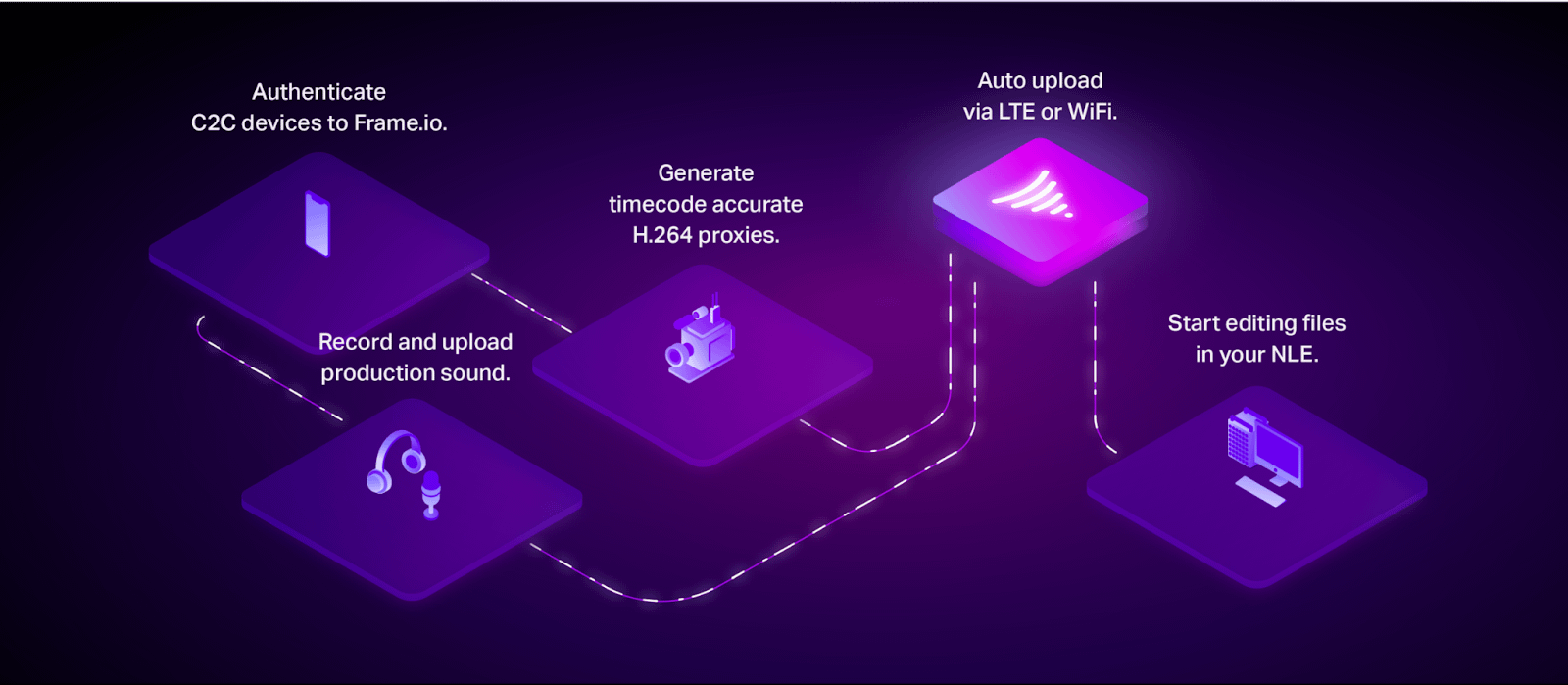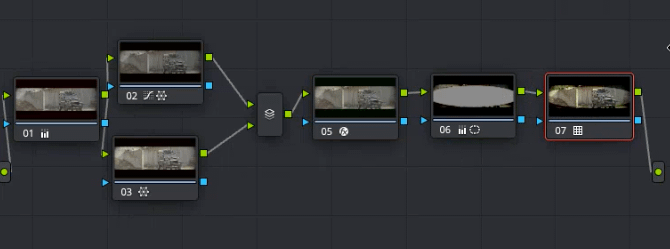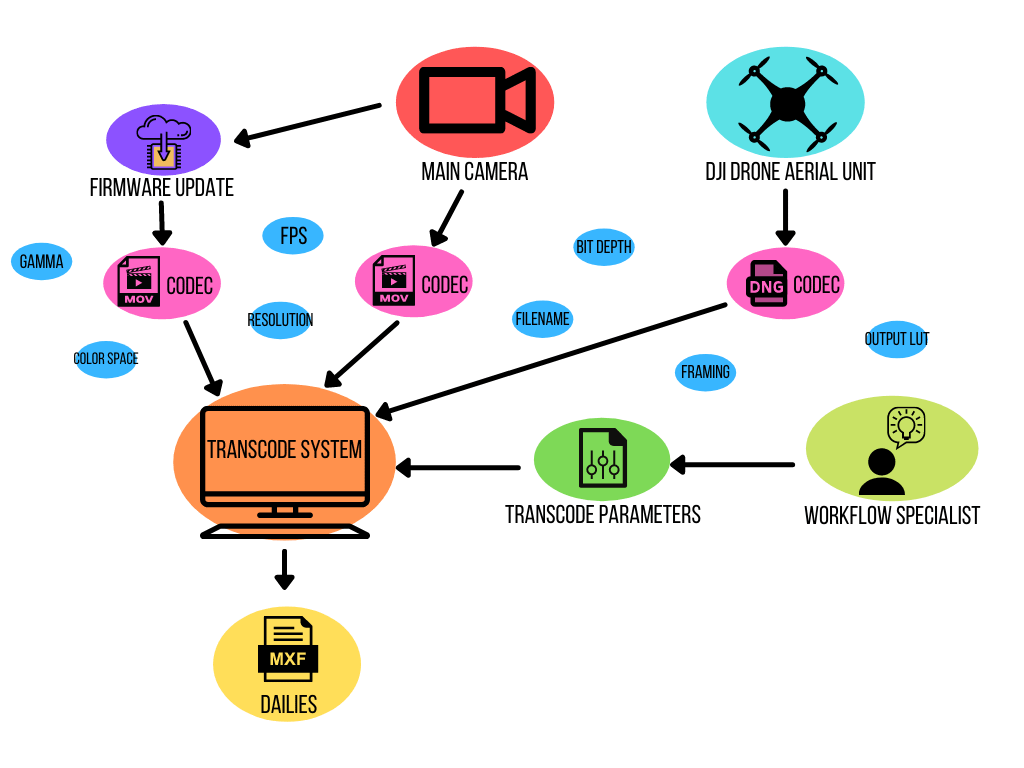Team Mixing Light Note: We are very excited to welcome Stacy Chaet to Mixing Light’s roster of Contributors. Stacy is helping us connect on-set workflows to post production teams. Please join us in welcoming her to Mixing Light! You can learn more about Stacy by visiting her Mixing Light author landing page.
Understanding the different types of dailies you can execute in your productions
What are Dailies?
Dailies, or rushes as they are sometimes called, are the raw, unedited footage shot during a single shoot day. The term originated when filming was done on celluloid film stock and sent to a lab for processing. The film was synced to sound, a new film print was made and delivered back to the production for review – allowing the team to review and evaluate the previous day’s work.
The batch processing and review of a single day’s work became known as Dailies.
This was the only way filmmakers could see what was filmed the previous day. And if post production didn’t start until production wrapped, this process was invaluable to everyone involved.
What happens during the dailies stage sets the table for the entire post production team and workflow.
Unorganized or mismanaged dailies can lead to countless hours of fixes in finishing. The digital age brings us another name for dailies: Proxies or proxy files.
Dailies are the raw materials that shape the work of editors. However, dailies are vital to many crew members besides the editor. Cinematographers, DITs, production designers, directors, and studio execs use dailies to judge their work. With that, dailies are the link between on-set production and post production.
Many technological advancements over the years have transformed what is possible in dailies and how productions use them. In fact, delivering dailies can mean a variety of things. I’ve broken them into six categories covering the most common scenarios. In this insight, I will give a broad overview of each one. In subsequent insights, we will dive into the particulars of each. We’re going to focus on live-action editorial and screener dailies.
Breaking down the types of Dailies
While dailies sound simple – a myriad of workflows have evolved, and today many professionals break them down into several varietals. In this Insight, we’re laying a foundation for understanding these differing workflows. If these names don’t make sense to you, keep reading! I’ll explain each and offer their advantages and challenges:
- Immediates – Dailies generated directly on-set from capture devices
- Quick and Dirty – Ungraded dailies or a single LUT applied to all material; auto-sync
- Shot by shot One Light – Dailies with either single LUT or multiple LUTs; may include CDL adjustments shot to shot and may include slipped sync
- Shot by shot Full Grade – A full color grade (including secondaries) or effects (such as grain) applied to dailies
- Mezzanine or Intermediates – Typically, a full grade (including secondaries) or effects (such as grain) are applied. Mezzanine or intermediate files are generated before dailies creation in this multi-step process
- Camera Original Masters – The highest-quality media generated by capture devices.
1. Immediate Dailies
There are two types of immediate dailies (usually just called ‘immediates’):
- Web immediates
- Local immediates
Both sync audio based on timecode if syncing external audio is possible.
With tools like Frame.io and Moxion implementing workflows for near-real-time immediate screener daily playback on the web, the term immediates has become quite the buzzword. These camera-to-cloud (C2C) workflows have propelled the use of immediates as a critical tool for productions, especially in a post-COVID world. Many productions have scaled back on set visitors, making speedy playback invaluable.
Typically, web immediates are H264/H265 files optimized for the web. Depending on your bandwidth, you may even be able to upload higher quality immediates that are decent enough for editing.

Local immediates have been around since the advent of digital cinema cameras. RED, Sony, and Panasonic have dual-recording capabilities directly in-camera, simultaneously encoding the captured frame into one high-quality and a separate low-quality file. Newer models may allow simultaneous audio recording as well, where the audio is typically the onboard mic for scratch audio.
There are also external recording devices, such as the Ki-Pro and Cinedeck, that simultaneously record the captured frame for cameras that do not offer dual recording natively. This type of dailies is quite common in live entertainment and documentary work. Local immediates are usually generated in a Log recording format (to preserve the camera’s full contrast range and color bit depth) – or with a single viewing LUT applied to all files.
Immediates
Advantages:
Proxies generated simultaneously can greatly expedite the editing process, making them indispensable for tight turnarounds.
Challenges:
Local Immediates: With two separate encoding streams, the possibility of the two resulting files NOT being identical is introduced. A corrupt frame in the master file may go unwatched until online, creating unhappy surprises.
Web Immediates: Camera to cloud (C2C) is still a new concept with kinks to work out.
2. Quick and Dirty Dailies
These transcodes may be created with automated workflows or a “set ‘em up and leave ’em” workflow. NLEs offer their own quick and dirty transcode options.
For automated workflows, transcoding software is often set to start as soon as files appear in a watch folder. The software Telestream Vantage or Grass Valley XRE Transcoder 9, for example, can be set up with several encoding profiles, which are triggered upon the master files’ landing in the watch folder. Encoding profiles may be the same for all transcodes or can be different based on the type of master file input.

“Set ‘em up and leave ’em” workflows require a human to set up the workflow. While Vantage and XRE Transcoder 9 can be used in these workflows as well, other software like Pomfort Silverstack Lab or DaVinci Resolve is commonly used. The human touch permits more customization than fully automated workflows.

Quick and Dirty
Fully Automated or “Set ’em up and leave ’em”
Advantages:
Little to no human time is spent creating dailies, providing more time for other tasks. Quicker than adjusting shot by shot.
Challenges:
Less customization than adjusting shot by shot.
Check out our on-set tutorials in our Insights Tutorial Library
From understanding Dailies to round-tripping CDLs in DaVinci Resolve, there’s more to explore!
3. Shot by Shot One-Light
One-Light dailies, named for the process of film developers color-timing dailies using a single set of three lights (Red, Green, Blue), require DITs, dailies colorists, and/or dailies operators. The color adjustments are limited to remain software-agnostic. The most commonly used is the CDL + LUT workflow. This is especially important when dailies are created in software from a different manufacturer than your final color grading software. Smaller productions may use DaVinci Resolve or Pomfort Silverstack Lab for these dailies. In comparison, larger productions use more specialized software (including many blockbuster films) like Colorfront On-Set Dailies or Filmlight Daylight.

The person processing the dailies will look at every shot, matching exposure and chroma file by file, to ensure a seamless edit between takes and cameras. They also slip-sync external audio depending on how accurate the auto-sync is and enter specific metadata (like scene and circle take) detailed by the production’s script, camera, and sound reports.
Shot by Shot One-Light Dailies
Advantages:
With shot-by-shot adjustments, the edit will playback cleaner, allowing viewers to focus on the content rather than jarring cuts and out-of-sync audio. The additional metadata, checked by a human, gives editors and viewers of dailies a more accurate idea of what was filmed.
Challenges:
Higher cost than quick and dirty and immediates methods – using humans dedicated to this time-consuming task. The Cost of specialized software can be significant.
4. Shot by Shot Fully Color Graded
Fully graded dailies are a cinematographer’s dream. They provide the most precise and creative look of all the dailies types. These dailies are likely created straight from the final color grading platform, Filmlight Baselight and DaVinci Resolve being the most popular. Not only can these dailies have custom color looks with secondaries and other tool sets unique to their finishing platform, but they may also have grain or other effects applied to the dailies.

A highly skilled dailies colorist or a final colorist may perform the color grade. However, do not expect the same person to always be processing/rendering the media. Another operator may be processing and delivering dailies to break up the workload and allow the colorist to work on other shows. If relying on a final colorist, your dailies may be squeezed into their busy schedule rather than be based on your production’s schedule. Oftentimes, a supervising colorist may grade stills or selected shots while another colorist applies and finishes the look to the rest of the dailies.
While these dailies will look fantastic, the full grade makes the dailies process longer, delaying how quickly stakeholders can view the media. If the show is VFX heavy, the VFX houses may not be able to recreate the original look. However, if the color grading software is set up in a specific way, the colorist can keep a CDL-compliant look on the first node/layer to pass along, allowing the VFX shot to be cut back in with the same color palette as shots around it.
Shot by Shot Full Grade
Advantages:
Most creative and unique look. Allows everyone downstream to view the timeline with the Cinematographer’s and Director’s intent, from the earliest rough cuts through the final approved color grade.
Challenges:
It takes longer to create. Difficult for outside vendors to work within the color grade and deliver results consistent with the intent of the above-the-line talent.
5. Mezzanine/Intermediate Dailies
Mezzanine, or Intermediate, dailies are NOT generated directly from a camera master file. These may be “new master” files generated due to incompatibility of a format within the pipeline or for ease of online use. They also may be fully graded (or one-light) dailies rendered out for use in a more sophisticated dailies platform.

When creating mezzanine files, you may be throwing out metadata embedded in the original camera files that could be used down the post production pipeline. The following metadata must be maintained to perform a proper conform, regardless of whether the mezzanine files will be used in the conform:
- Tape Name (a.k.a. Reel Name)
- Source Timecode + Duration
If the mezzanine files WILL be used in the conform, you want to create them in the highest quality possible (sticking to the same codec if possible)
Mezzanine/Intermediates Dailies
Advantages:
If full grade – the most creative and unique look. Ease of online – less time in conform where time is more expensive to waste
Challenges:
Take longer to create and adds an extra step. Can double the amount of media. If you follow a full-grade dailies workflow or if VFX is required – it’s difficult for outside vendors to re-create the final color. The production risks a possible loss of useful metadata.
6. Camera Original Master Dailies
You may ask, don’t you have either dailies OR camera original masters? Yes, that is correct, in one manner of speaking. However, remember how I started this Insight by defining dailies as the “raw unedited footage” and “what editors shape an edit from”. In that sense, Camera Original Masters qualify as dailies.
In some productions, editors edit with Camera Original Masters. For fast turnarounds and shows where the master acquisition format is not processor intensive, editing with masters can save costs and time.
Masters
Advantages:
No dailies cost or time spent manually applied LUTs, or generating CDLs.
Challenges:
Not practical for large format acquisition or highly processor-intensive recording formats.
Wrap Up
I hope I’ve shown you that dailies come in various flavors. If you’re involved in developing a dailies pipeline or working within a dailies process, breaking down ‘dailies’ into a specific subtype lets you proactively implement a workflow that takes advantage of the strengths of that workflow – while actively working to avoid the challenges.
This Insight details many current types of dailies workflows – as they exist at the time of this writing. But our industry continues to evolve rapidly, and so do dailies workflows.
Cameras such as Arri’s new Alexa 35 have the ability to add grain textures straight to the master camera files, eliminating the need for application in the post process. Camera-to-cloud workflows will get refined and integrated with more software and hardware products. The ‘cloud’ faces many challenges, including cost and interconnectivity, the latter of which presents new business opportunities for those who seek to connect the different cloud systems.
But at the end of the day, media creators will always need to watch and organize their materials – and that’s what the dailies process supports.
Questions or thoughts? Use the Comments!
This is my first Insight on Mixing Light! My background is in workflow development, connecting teams both on-set and in post production. I’m curious to hear about the troubles, misunderstandings, or roadblocks you’ve faced in set-to-post workflows so I can share my thoughts and experiences overcoming or smoothing out these challenges. Please do use the comments!
– Stacy


